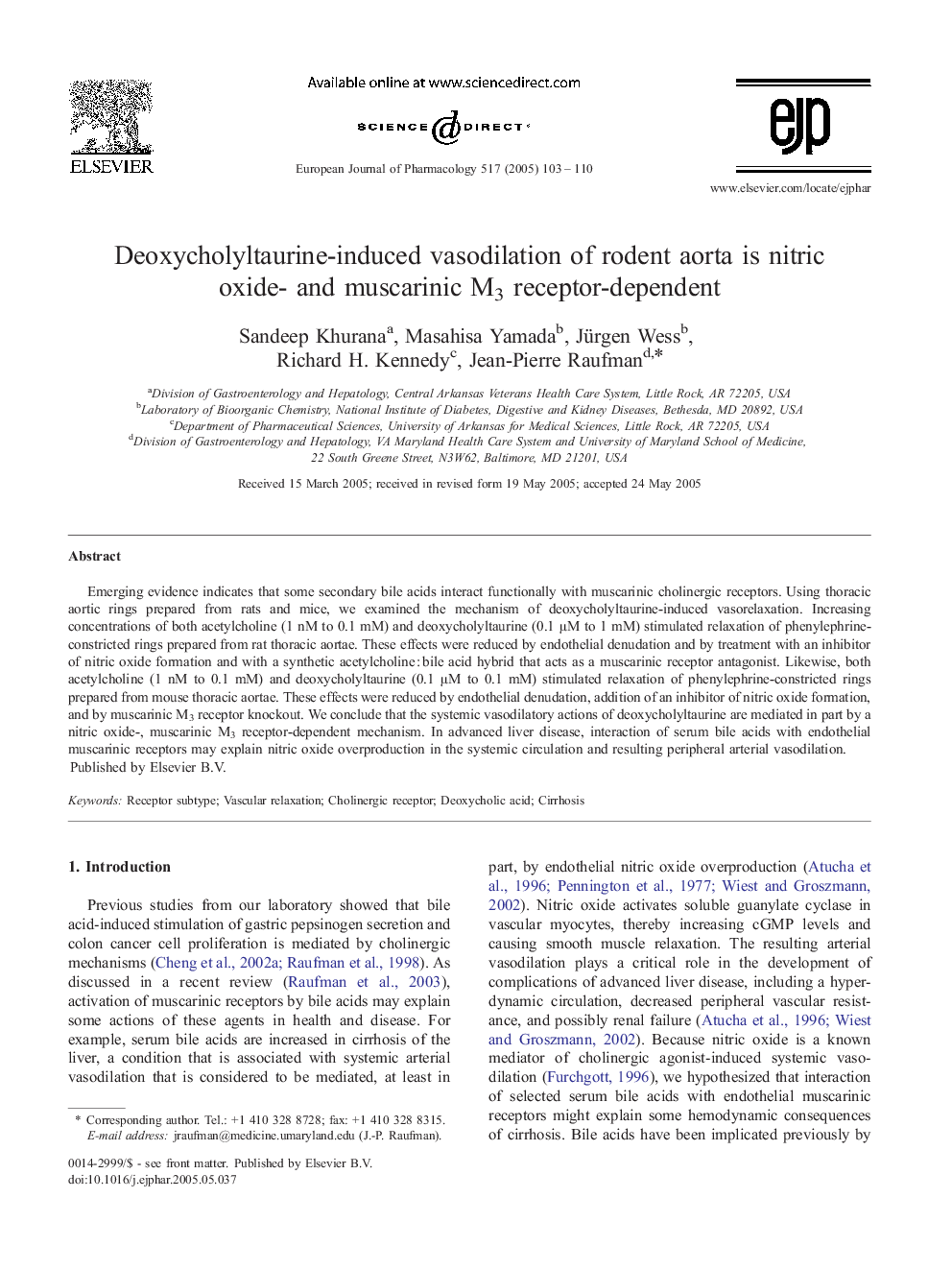| Article ID | Journal | Published Year | Pages | File Type |
|---|---|---|---|---|
| 9921246 | European Journal of Pharmacology | 2005 | 8 Pages |
Abstract
Emerging evidence indicates that some secondary bile acids interact functionally with muscarinic cholinergic receptors. Using thoracic aortic rings prepared from rats and mice, we examined the mechanism of deoxycholyltaurine-induced vasorelaxation. Increasing concentrations of both acetylcholine (1 nM to 0.1 mM) and deoxycholyltaurine (0.1 μM to 1 mM) stimulated relaxation of phenylephrine-constricted rings prepared from rat thoracic aortae. These effects were reduced by endothelial denudation and by treatment with an inhibitor of nitric oxide formation and with a synthetic acetylcholine : bile acid hybrid that acts as a muscarinic receptor antagonist. Likewise, both acetylcholine (1 nM to 0.1 mM) and deoxycholyltaurine (0.1 μM to 0.1 mM) stimulated relaxation of phenylephrine-constricted rings prepared from mouse thoracic aortae. These effects were reduced by endothelial denudation, addition of an inhibitor of nitric oxide formation, and by muscarinic M3 receptor knockout. We conclude that the systemic vasodilatory actions of deoxycholyltaurine are mediated in part by a nitric oxide-, muscarinic M3 receptor-dependent mechanism. In advanced liver disease, interaction of serum bile acids with endothelial muscarinic receptors may explain nitric oxide overproduction in the systemic circulation and resulting peripheral arterial vasodilation.
Related Topics
Life Sciences
Neuroscience
Cellular and Molecular Neuroscience
Authors
Sandeep Khurana, Masahisa Yamada, Jürgen Wess, Richard H. Kennedy, Jean-Pierre Raufman,
